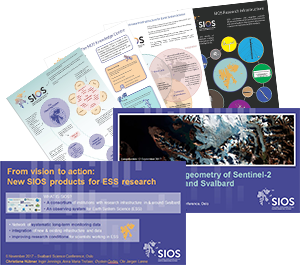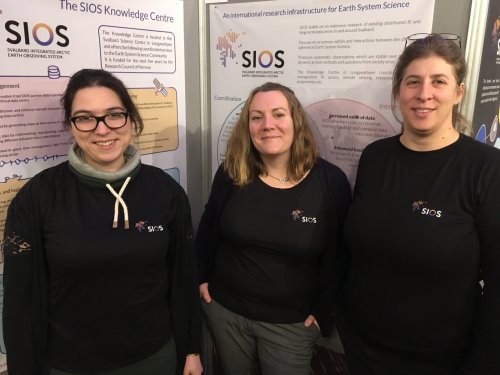
Three members of SIOS-KC, and our chairman Kim Holmén, attended the Svalbard Science Conference at Fornebu near Oslo from 6 - 8 November 2017. It was a great opportunity to meet and talk to many people in the Svalbard science community, make new contacts, and inform others about the newest developments within SIOS.
We had two talks during the Toolbox session on the first day. The first was entitled “From vision to action: New SIOS products for ESS research” and was delivered by our information officer Christiane Hübner. This was an update on the many new and improved services that are already being offered by the KC to researchers, as well as a few tools that are still in development. To keep up-to-date on all new developments in SIOS, please keep checking the news section on our website and follow us on Twitter or LinkedIn. The second talk was “Improved image geometry of Sentinel-2 data for Norway and Svalbard” and was delivered by our remote sensing officer Anna Maria Trofaier. This was an introduction to a pilot collaboration between ESA and the Norwegian Space Centre, using the Norwegian Polar Institute’s 20m DEM to orthorectify Sentinel-2 satellite data for Svalbard. The data will soon be available on the SIOS data portal.
In addition to the two talks, SIOS-KC presented four posters at the conference, with general information about SIOS, the Knowledge Centre, the benefits to researchers and the diversity of SIOS research infrastructure. The posters are available to download from our website in the Documents section.
Thank you, Svalbard Science Forum and Research Council of Norway, for organising the conference!

You may have noticed our rather fetching SIOS t-shirts in the photo above; these were ordered specially for the conference from the Norwegian company Grønt Skift (https://www.grontskift.no/). This company has a focus on selling clothing that is environmentally sustainable and produced in an ethical way. Our t-shirts are made from 50% organic cotton and 50% tencel, which is a fabric made from responsibly grown eucalyptus. The factory in India has fair working conditions and uses solar and wind energy, so the carbon emissions from the production is 90% lower than a standard t-shirt. In addition the printing was done by a local company in Oslo that specifically employs people who have had difficulties finding employment. Check out their website above for more green products!



























